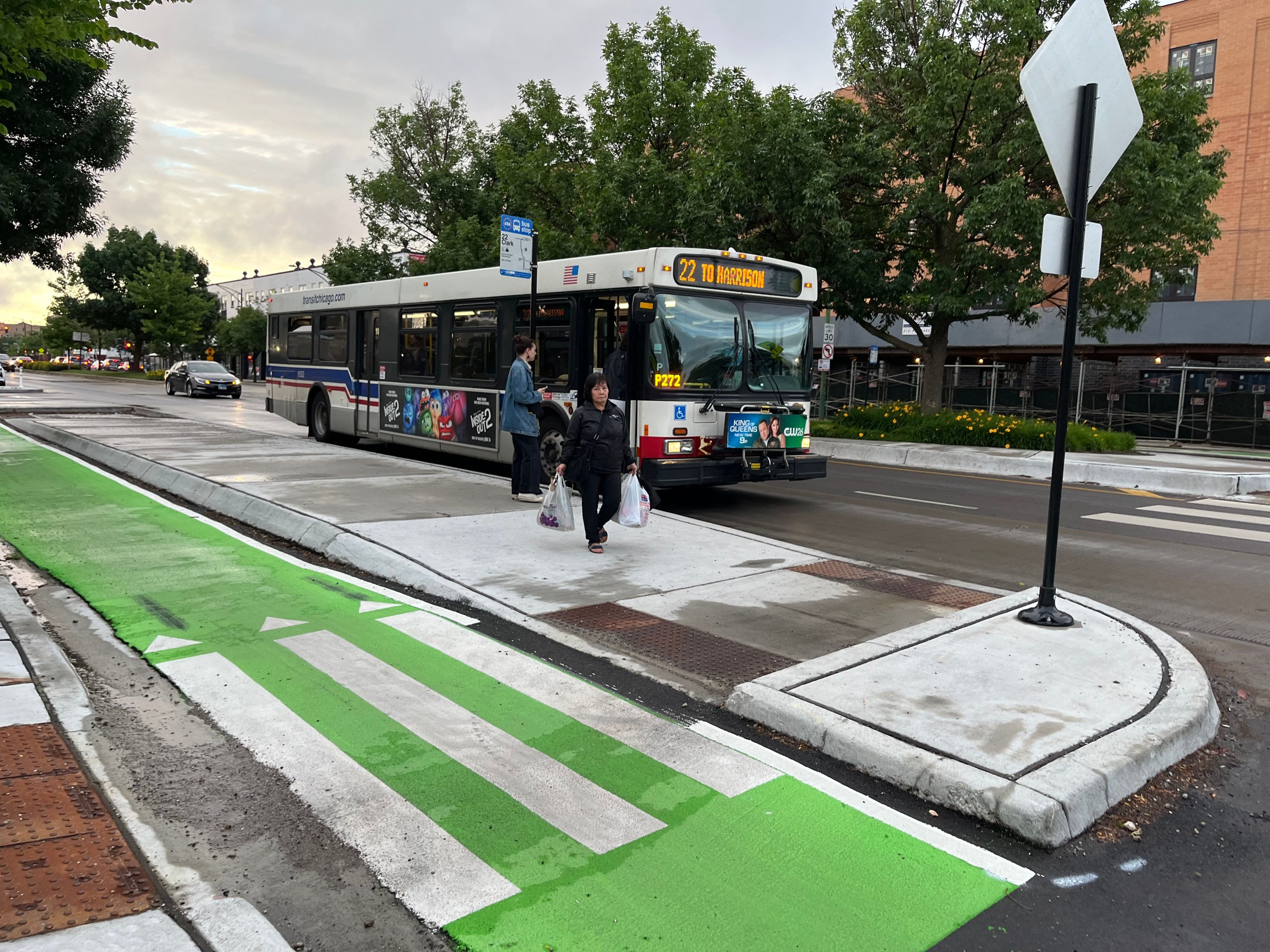
This morning's City Council Pedestrian and Traffic Safety Committee meeting covered a hot topics in Chicago: How to make bus service faster and more reliable. Many sustainable transportation and environmental advocates showed up for the hearing to make statements during the public comment period.
Dominic Amato, co-chair of the Chicago Transportation Team for Sierra Club Illinois, discussed the problem of "ghost buses", scheduled runs that never show up. He noted that part of the problem is bus bunching due to congestion points along routes that slow vehicles down, which can be alleviated through infrastructure. "Transit Signal priority should be the norm, not the exception on every major street... Bus stop bump-outs, so that operators don't have to sit and wait for drivers to politely let them in, should also be the norm. Dedicated bus lanes that are actually enforced, or even materially separated from normal traffic lanes. We aren't trailblazing new ideas here. We are playing catch-up."
Jim Merrell, managing director of advocacy with the Active Transportation Alliance, said the City needs to get serious about creating a dedicated network of bus-priority streets. "Especially when executed correctly, [this] can bring rapid transit style service to corners of the city that have never been served by our rail network." He noted that the CTA and the Chicago Department of Transportation recently created the Better Streets for Buses plan with ideas for making service faster and more reliable. "We are calling on you, members of City Council, to be bold in your leadership and to embrace this opportunity to make big changes." In addition to signal priority, Merrell advocated for creating true bus rapid transit, with pre-paid and level boarding at train-style stations, resulting in 'L' train-like speeds.
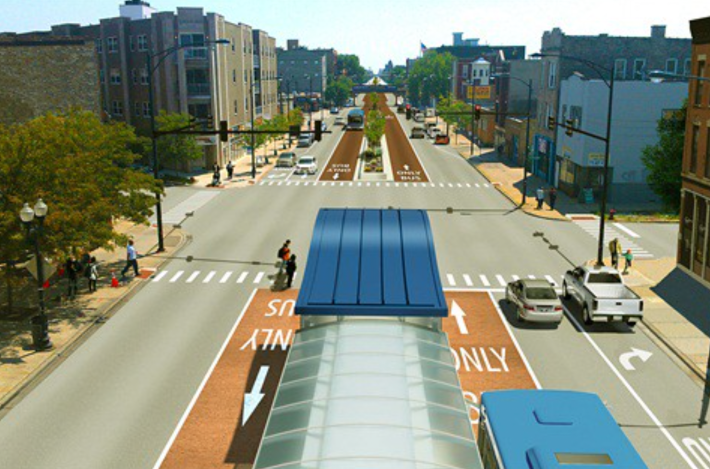
However, Merrell mentioned that last week local officials failed to act boldly to make a road less car-centric. "CDOT and Illinois Department of Transportation presented plans to rebuild North DuSable Lake Shore Drive without dedicated lanes for transit, a move that has been criticized by our own Regional Transportation Authority and many elected officials. This is not the kind of big thinking we need in this moment. We can and will do better."
"We like to think of our city as a world-class city," said Fabio Göttlicher, cofounder of Commuters Take Action. "However, I think we would be lying to ourselves if we said we had world-class transit. And let's be honest and work together to make it better." He praised cities around the world that have torn down urban highways. "These cities still manage to provide great transportation access to their people. How do they do it?" He noted that half of central Paris is currently closed to drivers for the Olympics, but residents and visitors are still getting around fine due to an effective transit system. He added that making Chicago less car-centric would make it safer. "We are the only developed country in the world where traffic fatalities are on the rise... Bus rapid transit should be a question of when, not if."
Former Streetsblog Chicago co-editor Courtney Cobbs, currently with Better Streets Chicago, spoke eloquently about the challenges our city's bus system must overcome. "There are thousands of Chicagoans right now stuck in traffic," she said. "The solutions are readily available and have been available for years, and I am immensely frustrated that we are just now having conversations about funding and doing the improvements that we should have done decades ago... The average bus speed in Chicago is under 10 mph, and I am just gobsmacked that that is not embarrassing to the City Council... We need CDOT and CTA to work together to fix that issue. The technology exists. All that we lack is the political courage to put bus riders first."
After the public comments, there was a presentation on "Bus Improvements and Infrastructure" by CDOT's Managing Deputy Commissioner Vig Krishnamurthy and Complete Streets Director David Smith, along with the CTA's Chief of Planning and Innovation Molly Poppe and VP for Strategy and Innovation Cara Bader. Together, they discussed the Better Streets for Buses Plan.
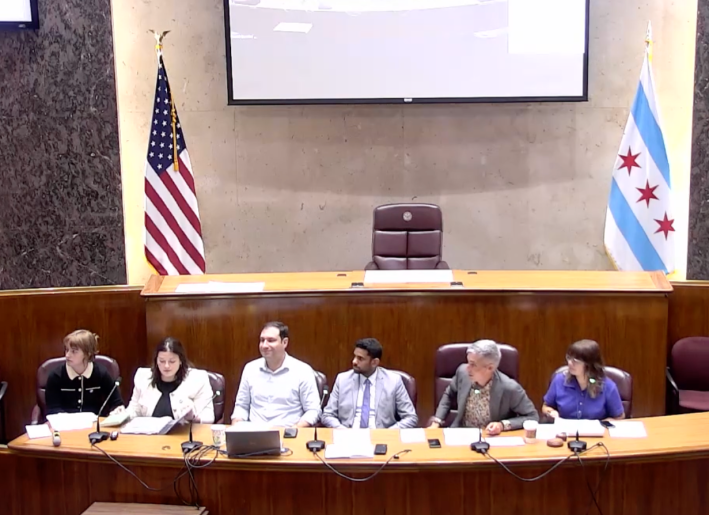
"We've really created this strategy around three main components of the transit experience," Smith explained. "First, getting to the bus, so everything we're doing now around pedestrian safety, expanding our cycling network, traffic calming. Ensuring that people can simply walk from their starting point to the bus stop is critically important." Second, he said, is installing bus stops that make it easier for bus drivers to pick up passengers with minimal dwell time, though features like bus bump-outs. "And then, riding the bus, coming down to looking at intersections, corridors where we're giving priority to transit through things like dedicated space and traffic signal improvements... We look forward to working across City agencies to get the work done."
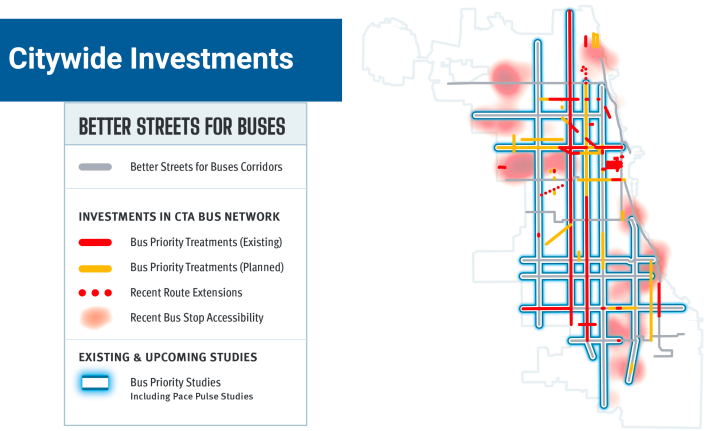
The CDOT and CTA staffers went on to discuss various strategies they've been implementing or considering to improve bus service. Here are a few notable slides from the presentation.
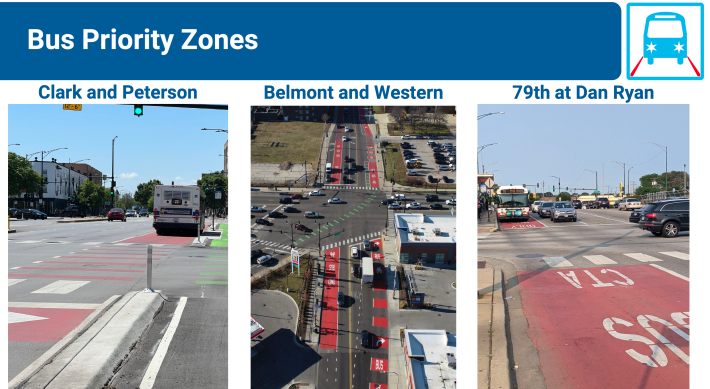
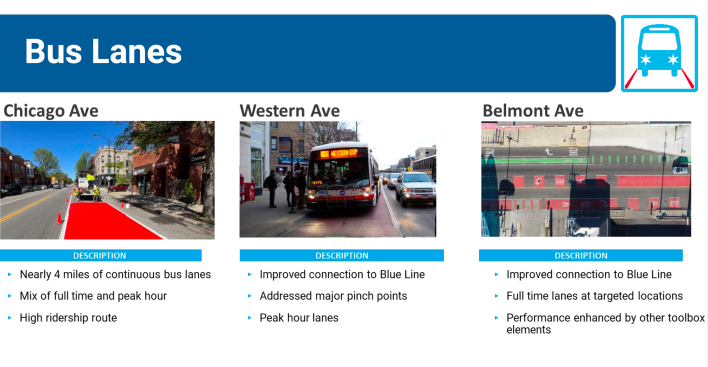
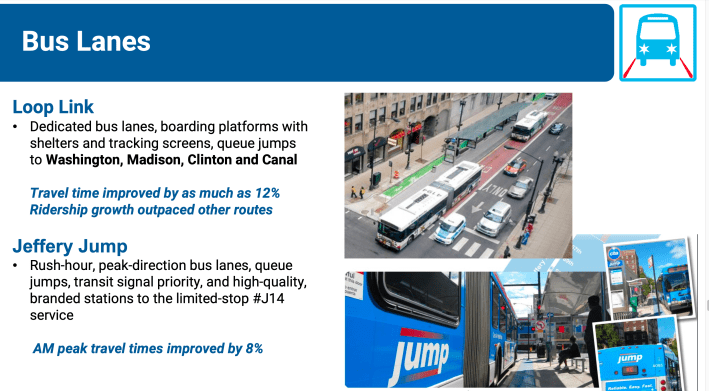
Here are a couple of things to keep in mind as the City moves forward with painting more bus-only lanes and, ideally, builds full-fledged bus rapid transit. Bus lanes are not particularly effective if they aren't enforced, and new state legislation would be required to legalize camera enforcement against driving in bus lanes.
Another reason why the Loop Link "BRT-lite" route resulted in only modest time-savings for riders is that the CTA never implementing the promised prepaid boarding feature, already common on express bus systems in peer cities. Chicago officials need to get serious about addressing those issues if our city is ever going to get fast, reliable bus service.
Committee Chair Ald. Daniel La Spata (1st) concluded the meeting by thanking the team and attendees for their presentations. "Every time I think I've learned all there is to know on this topic, I learn something new. I learn about the breadth of tools that we have available, and this is a really wonderful, robust toolkit that we have called Better Streets for Buses. And now the question in front of us is, what are we going to build with it? And I'm excited for all of us to get to answer that question together."
Click here to view a PDF of the presentation from the meeting.
For more details on how the meeting progressed, check out Streetsblog's live Twitter thread from the event.

Did you appreciate this post? Please consider making a tax-deductible donation, to help keep Streetsblog Chicago's sustainable transportation news and advocacy articles paywall-free.
